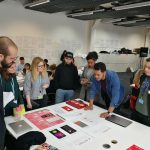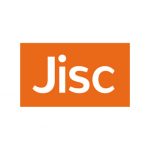EDITORIAL. Never Alone: Universities’ key role in supporting students’ wellbeing and mental health
Among the many issues universities are currently concerned about, students’ mental health and wellbeing have become a core concern. According to a YouGov’s survey (2016) a quarter of our students suffer mainly of depression and anxiety, or, mostly, both combined. The need to perform, financial worries, and being in a different and new social environment can all contribute to making students feel overwhelmed at times. The IPPR study Not by Degrees (Thorley, 2017), however, paints an even more disturbing picture.
How can e-learning support higher education after and during Brexit?
As the debate over the status of international students remains unabated and uncertainties over the likely impact of Brexit still unknown, Vitaly Klopot suggests the use of e-learning as a way for universities to continue having an impact beyond geographical constraints.
“The Sticky Campus”; improving our students’ sense of belonging through active learning, coffee and...
2018 promises to be an exciting and challenging year for universities and the Higher Education sector. Among the many less than positive news, there are also successful practices that make our universities stand out in the way in which they support their students’ experience, widen access and participation, and support their mental health and wellbeing. The ‘Sticky Campus’ at Abertay University is one such example. As Robertson explains and describes, the concept is simple and yet complex in its operationalisation.
A model for cross-sector collaboration: how commercial activity at Ravensbourne benefits academic teams and...
The Enterprise and Innovation Centre manages the commercial activities of Ravensbourne, including industry events, short courses and live briefs for industry. In this blog Commercial Projects Manager, Ruth Nicholls, discusses what a dedicated innovation department can offer academic teams, particularly in relation to enhancing student experience.
Graduate prospects in a ‘lights-out’ future? The ‘Earn to Learn’ Scheme
How to prepare students for the job market is becoming an essential part of how universities can prove they are value for money and value for our students. Yet, the job market is uncertain and fast changing. Ian Herbert shares with us how the ‘Earn to Learn’ (EtoL) scheme is enabling the University of Loughborough to provide students with work experience by collaborating with organisations and policy makers.
Be better with digital, students tell staff in Jisc survey
Students have stated their frustration at staff's lack of training in - and inconsistent use of - technology in Jisc's digital student tracker report. The survey which involved 22,000 higher education students is one of the largest of its kind.
The virtual open day – bringing the campus to the applicant
Clearing is often about making quick decision but how do you equip those students to make those choices when they haven't visited your university? Holding a virtual open day helps those students make an informed decision by offering them a glimpse of university life without setting foot on campus.
How clearing is changing
The A-level results are published next week with students entering what has been described as the most competitive admissions market yet. But Dan Benyon writes on Wonkhe that clearing is changing, starting earlier with universities adopting a much more targeted, data driven approach.
University libraries need to start putting the student first
A good library is an important weapon in keeping student satisfaction levels high, writes Ben Hickman from consultancy Alterline. But in an article for the Guardian Higher Education Network he adds that all too often they don't reflect the needs of the student of 2017 and like other parts of universities, must change their culture.
Welcome to the intelligent campus
As 'smart homes' become more and more sophisticated, universities are harnessing technology to improve the campus or classroom experience for students. Now institutions are planning on taking it to the next level, by using data from sensors, tracking and the internet, combined with information from other sources, as Jisc's James Clay describes in this blog.












